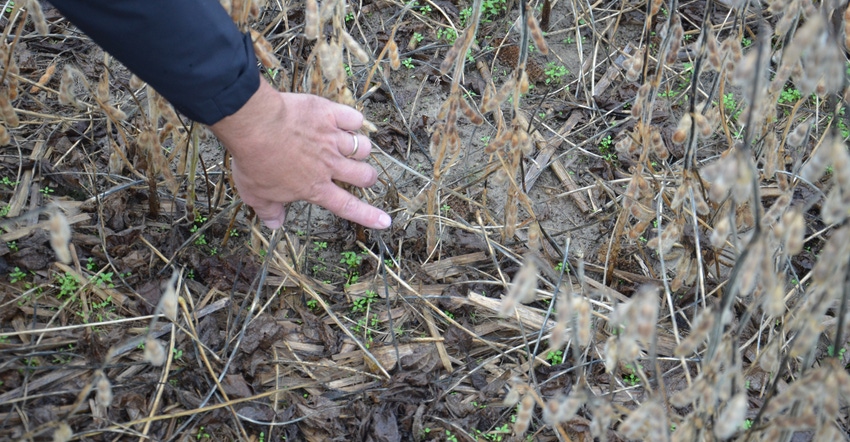
Shaun Casteel catches people’s attention when he says soybeans at 50,000 plants per acre have topped his population plots at the Southeast Purdue Agricultural Center in Butlerville, Ind., for the past several years. “And we haven’t torn up the cutterbar harvesting them, even though some look like small trees,” he quips. Casteel is a Purdue University Extension soybean specialist.
The 50,000-plants-per-acre treatment doesn’t do that well everywhere in Indiana, and Casteel isn’t advocating it. But he uses it as an example that a thin stand of soybeans can still perform better than most people would imagine.
Steve Gauck also underscores the ability of soybeans to compensate for thinner stands, either because the seeding rate was set low on purpose or because other factors resulted in a thinner stand than desired. Gauck is a sales agronomist for Beck’s based in southeast Indiana. Beck’s is the sponsor of Soybean Watch ’17.
“When I evaluate fields where the stand is thinner than the grower intended due to some outside factor, my cutoff is generally 80,000 plants per acre,” Gauck says. “We’ve found that if you have 80,000 plants per acre and you can control weeds, that field still has the ability to reach full yield potential.”
Compensation factor
If soybeans have a secret, it’s their ability to adapt to a wide variety of conditions and attempt to produce as many viable seeds per plant as possible. When stands are thin, soybeans tend to put out more branches, Gauck says.
“We saw it clearly in the Soybean Watch ’17 field this year. Where populations were at or just above 80,000 plants per acre, it was common to find plants with two or three branches with a sizable number of pods on them. Where stands were 120,000 plants per acre or higher, plants tended to have fewer branches. If there were branches, they typically didn’t have many pods. The nodes on those branches were stretched out compared to nodes on plants where the population was thinner.”
One factor that determines how well thin stands can compensate centers around distribution of the plants, Gauck says. If there are gaps of 2 to 3 feet or more in missing rows, it will be harder for remaining plants to make up the difference and still reach full yield potential.
“Weeds must be controlled, too,” he notes. “They need to be controlled as early in the season as possible. That was tough sometimes this year because fields were often very wet when they should have been sprayed. If weeds are out there too long, they can hurt yield.”
How closely to the ground plants set pods can also be an issue. While it varies by variety, thinner stands tend to start setting pods lower to the ground, Gauck says. Even with modern combines, it can be a challenge to capture all pods near the soil surface.
“The cutterbar needs to be in good shape, and everything needs to be operating properly,” Gauck says. “It’s important to capture as many of those pods close to the ground as possible.”
About the Author(s)
You May Also Like




